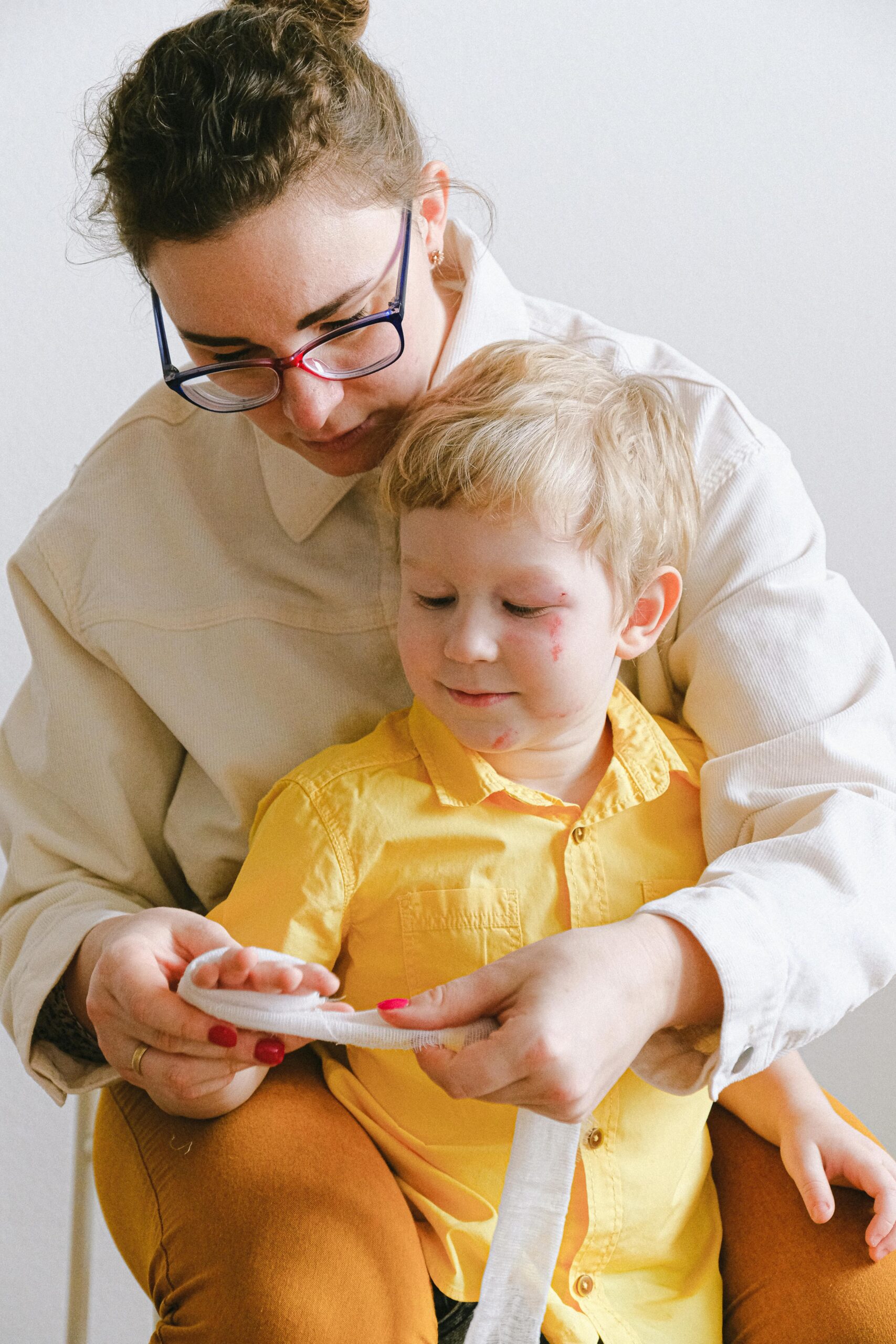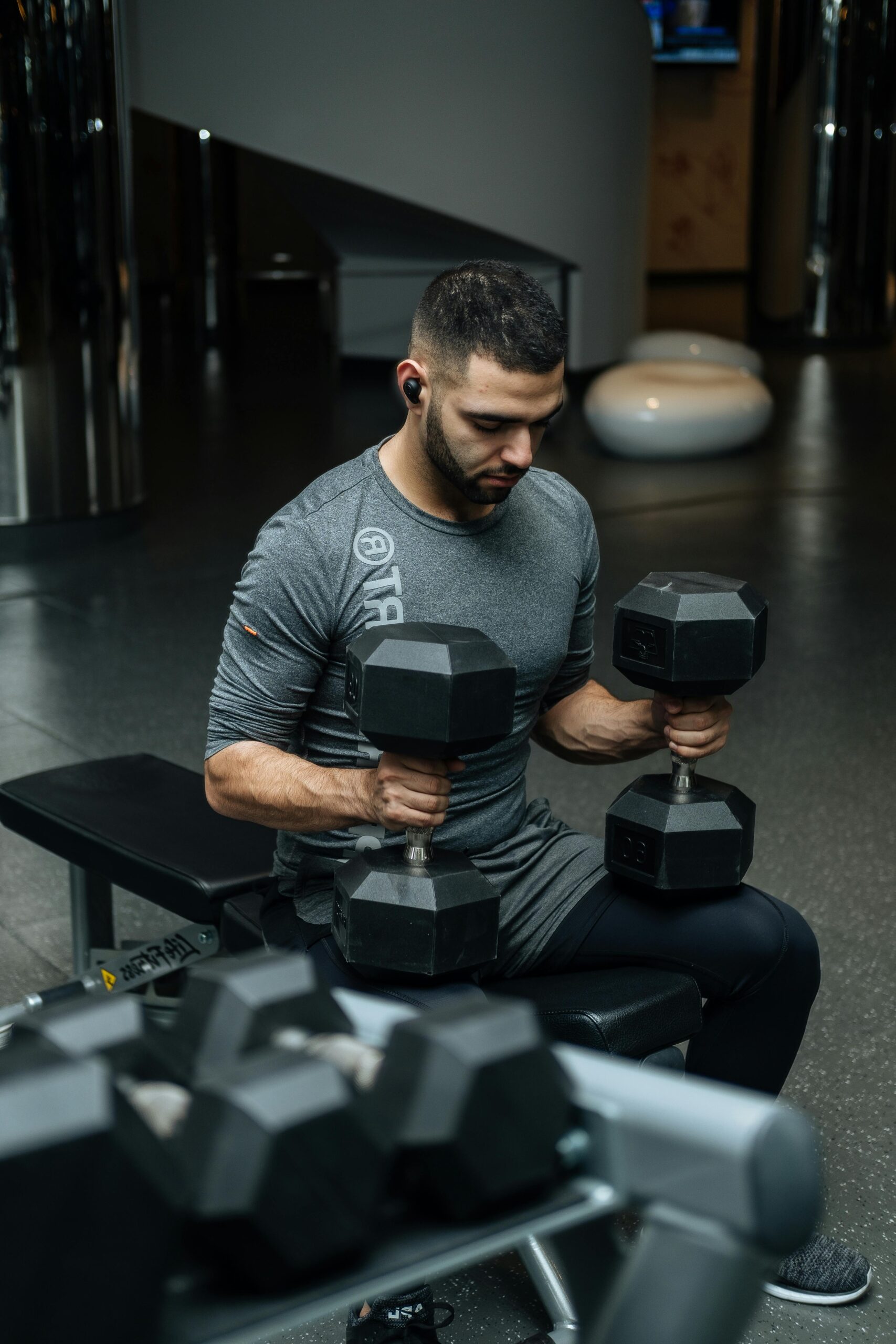- info@denveruppercervical.com
- 303-955-8270
Cervical Spine: Structure, Disorders & Treatments
Exploring the Unique Causes of Headaches in Denver and How Chiropractic Care Provides Relief
The cervical spine, commonly referred to as the neck, consists of 7 bones labeled C1 to C7 vertebrae. These bones are cushioned by intervertebral discs that not only enable the neck to move smoothly but also serve as shock absorbers during physical activities.
As an upper cervical chiropractor, I work almost exclusively with the C1 and C2 vertebrae. However, I’ve studied the entire cervical spine extensively and worked with patients on issues with all of the vertebrae in that area.
You might become aware of your cervical spine as you stretch before a workout. Or perhaps you notice if tension has collected in that area before a chiropractic adjustment .
What is the cervical spine ? The cervical spine, or the C spine, is the neck part of your spine that protects your spinal cord and helps you move your head around. Taking care of it is crucial for your overall well-being.
The cervical spine is composed of smaller articular bones. Articular means the bones are connected by joints, making it the most flexible region of the spine. Because of this mobility, the cervical spine can be more susceptible to injuries and disorders.
We’re here to help you understand and care for your cervical spine, so you can keep moving and feeling great. If you have any questions, don’t hesitate to ask. Your spine is in good hands!
If you’re in the Denver area, schedule an appointment with DUCC by calling us at 303-955-8270 or by visiting our Contact Us page.
Cervical Spine Anatomy
The spine can be divided into 5 regions : the cervical spine, thoracic spine, lumbar spine, sacrum, and coccyx.
The cervical spine is comprised of 7 small bones labeled from C1 to C7, connected by discs to form the structural foundation of your neck. Housed within this neck structure is your spinal cord, shielded by bone and layers of protective meninges.
Your cervical spine includes essential nerves that extend to your neck, shoulders, arms, and hands. Muscles and ligaments provide the necessary strength and stability to keep everything in place.
That’s a general overview; now, let’s discuss each part for an in-depth understanding.
The anatomical parts of the cervical spine include:
The cervical vertebrae C1-C7 connect the base of the skull to the top of the back. These vertebrae are the smallest vertebral bones in the spinal column. They form a lordotic curve (a curve towards the front of the body).
C1 and C2 (the atlas and axis) are called atypical vertebrae because they function quite differently than C3-C6, which are called the typical vertebrae. Then there’s C7, known as the unique vertebra. It bridges the cervical and thoracic spine.
The atlas (C1) and axis (C2) are the top 2 vertebrae that can be found just beneath the skull. They form the craniocervical junction and they allow all range of motion for the head and neck.
The atlas (C1) is named for the mighty Titan, Atlas. In Greek mythology, he rebels against Zeus and is sentenced to bear the weight of the heavens. Similarly, the vertebral atlas sustains the weight of the cranium and brain. The atlas is referred to as a cradle because it cradles the skull.
The axis (C2) has a vertical bony protrusion known as the dens or odontoid process. The ring-shaped atlas fits over the dens, creating the medial atlanto-axial joint, allowing the head’s rotational movement.
The atlas anchors the occipital bone (base of the skull) to the spinal column via the atlanto-occipital joint. This joint allows for much of the forward and backward motion of the head.
Each vertebra has a bone extension called the spinous process (the ridge you feel through the skin extending the length of the back), where muscles and ligaments connect.


In between the cervical vertebrae are cervical discs. They cushion the vertebrae and function as shock absorbers between the bones during daily activities. These intervertebral discs consist of a tough outer layer called the annulus fibrosus and a soft interior called the nucleus pulposus.
Between each vertebra and disc, the vertebral endplate helps transfer nutrients from the bone to the disc.
Each vertebra consists of a vertebral body and vertebral arch. The anterior vertebral arch, made up of 2 laminae and pedicles, encloses each vertebra. Vertebrae are connected via the facet joints, enabling flexion (forward and backward motion).
Together, the vertebral body and arch form an enclosed space called the vertebral foramen. The stacked vertebrae with their foramina (plural of foramen) create a tunnel called the vertebral column or spinal canal, which contains the spinal cord.
Put in simpler terms, each bone in your spine has a curved bony part in the back. These curves join together to make a long hollow tunnel that goes through your whole spine. We call this tunnel the spinal canal. It’s like a pathway for your spinal cord and bundles of nerves.
The spinal cord is the central structure within the spine that runs from the base of the brain to the lower back, responsible for transmitting signals between the brain and the body. It plays a crucial role in transmitting signals for movement, sensation, and various bodily functions.
Your spinal cord is cushioned by cerebrospinal fluid (CSF) and wrapped in 3 protective layers called the meninges. The meninges consist of the dura mater, arachnoid mater, and pia mater.
At each level of your spine, a pair of tiny openings called foramina let nerves come out. There’s one opening on the left and one on the right.
Cervical nerves are specific branches of spinal nerves that emerge from the foramina in the cervical or neck region of the spinal cord. Each cervical nerve has a particular role in controlling different areas of the upper body, such as the neck, shoulders, arms, and hands.
Laced throughout the cervical spine are vertebral arteries, which transport about 20% of the brain’s blood supply. In all 7 of the cervical vertebrae, there are tiny holes called transverse foramen located within their transverse processes.
Several muscles surround the cervical spine. They aid with the overall mobility and stability of the head and neck.
The sternocleidomastoid (SCM) is a major muscle located in the human neck. It plays a crucial role in controlling a variety of movements involving the head and neck. The suboccipital muscles (consisting of 4 pairs) link the upper part of your cervical spine to the bottom of your skull.
Tendons attach muscles to the vertebral column, while ligaments attach one vertebra to the next.
The anterior longitudinal ligament is a band that stretches from the bottom of your skull down the front of your cervical vertebrae.
The ligamentum flavum helps maintain the stability of the vertebral column.
The posterior longitudinal ligament (PLL) supports the intervertebral discs and prevents excessive flexion (bending forward) of the spine. It also helps to contain and protect the spinal cord.
What is the best way to treat cervical spine pain? The best way to treat cervical spine pain is to treat the root of the problem through proper upper cervical chiropractic care. However, injecting corticosteroids into the joints of the neck or the epidural space can provide temporary pain relief.
I don’t recommend steroids to most of my patients, as this won’t treat the root cause but masks uncomfortable or painful symptoms. Also, I’ve leaned away from suggesting corticosteroid injections as more research suggests they may cause very negative long-term health risks , like high blood pressure and weakened bones.

Conditions and Injuries
Deterioration of the cervical spine and surrounding soft tissues due to a number of conditions, tumors, infection, and injury can have a substantial impact on overall bodily function.
Computed tomography (CT) scans are a valuable diagnostic tool for assessing cervical spine issues.
A list of cervical spine disorders and injuries include:
Intervertebral Disc Herniation
Disk herniation commonly occurs due to a gradual process known as disk degeneration, which is primarily associated with the wear & tear that naturally happens as we age. When it occurs, the nucleus pulposus (gel-like center) of the disc leaks beyond the vertebra.
Cervical Radiculopathy
Cervical radiculopathy is a condition where nerves or nerve roots become inflamed, compressed, or damaged.
Cervical Osteophytes
Osteophytes, also known as bone spurs, usually develop where bones meet a joint or where ligaments and tendons attach to a bone. When these bony growths form in the cervical spine, they are called cervical osteophytes.
It’s important to note that these growths themselves don’t typically cause pain.
Spinal Stenosis
Spinal stenosis is the narrowing of the spinal canal which leads to spinal cord compression. This can occur due to any number of cervical conditions.
What are the symptoms of cervical spinal stenosis ?
Symptoms of cervical spinal stenosis include:
- Tingling sensation in arms, hands, legs, and feet
- Neck pain
- Numbness
- Weakness
- Difficulty balancing
- Neurological deficits
Spondylosis
Spondylosis refers to the degeneration of cervical discs due to age.
Cervical Instability
Cervical instability refers to loose ligaments that cause excessive movement of the atlas and axis. Common causes include whiplash, genetic disorders, and autoimmune conditions including rheumatoid arthritis and Ehlers-Danlos Syndrome.
Fractures
A cervical fracture occurs when one of the bones in the neck gets broken or fractured. Usually, this happens because of a sudden and forceful event like a fall, car crash, or some kind of impact to the neck.
Sprain
A cervical sprain is when a ligament in the cervical spine is injured in the form of stretching or tearing.
Rheumatoid Arthritis
When rheumatoid arthritis occurs in the cervical spine, the immune system mistakenly attacks the soft tissues in and around cervical joints and ligaments. Rheumatoid arthritis often leads to misaligned cervical vertebra.
Rheumatoid arthritis is also an underlying cause of some cases of cervical instability.
Misaligned Vertebrae
The atlas (C1) is the most misaligned vertebrae. The atlas can shift more easily since it’s the only vertebra without a vertebral body to secure it to the vertebra below. A slight shift may not sound serious; however, if the atlas remains out of place, it can cause:
- Neck pain
- Headaches
- Imbalance
- Nerve compression
What does cervical spine pain feel like? Cervical spine pain, often referred to as neck pain, can vary in its nature and intensity from person to person, depending on the root cause.
Hyperextension
Hyperextention, also known as whiplash, occurs when muscles extend forward and backward quickly, like the crack of a whip.
Myelopathy
Myelopathy is the term used to explain symptoms that arise when the spinal cord experiences significant compression, whether due to injury or conditions like degenerative diseases.
Treatments
A good way to begin addressing the effects of degenerative changes would be to analyze your daily activities, consider chiropractic care, and begin physical therapy.
You can visit your primary care doctor for a physical examination. If it’s not too serious, they might advise you take some over-the-counter pain relief.
Again, in my experience with patients, this masks something that should be addressed at the root cause. My recommendation is to see a chiropractor (preferably, one who specializes in upper cervical chiropractic and uses gentle, instrument-assisted adjustments) to address why pain has occurred.
Healthy changes to protect your cervical spine include:
Instead of craning your neck to gain a better view of something beyond your sightline, take the extra time to find the best viewpoint and go to it.
Rather than constantly looking up or down at a computer screen, adjust your chair or desk so that your neck might remain in a neutral, forward-facing position.
If you wake up with a stiff neck, invest in a more supportive pillow.
Pay attention to the amount of weight you carry on your shoulders (thinking of bags and purses here). Your shoulders may bear most of the load, but the muscles surrounding the cervical spine are involved and can be easily over-extended.
If you find that your neck and shoulders are often bowed over or scrunched up, make a conscious effort to straighten your back and neck.
Incorporate cervical spine exercises into your daily routine, such as chin tucks, neck rotations, and lateral extensions to help strengthen your neck.
If you can’t identify the issue causing your discomfort, you might consider consulting an orthopedic doctor for their insights. They might advise lifestyle changes, prescribe medication, or recommend surgery to remedy the problem.
An injection of corticosteroids into the joints of the cervical spine or epidural space be used to temporarily relieve pain.
A common surgical procedure involves the placement of lateral mass screws to support vertebra and regain space for the spinal cord.
Treatments for cervical spine disorders range from simple improvements to your daily activities to surgery. As about 10% of adults suffer from neck pain, it would be worthwhile to invest in healthy habits now.
Cervical Chiropractic
If you suffer from any of the above injuries, disorders, or chronic neck pain, cervical chiropractic could be your route to relief. Cervical chiropractic care, also known as orthospinology , focuses treatment on the cervical spine. However, benefits extend beyond just the cervical region.
Cervical chiropractic care benefits the whole body. It’s known for treating a wide range of conditions , from headaches and poor posture to fibromyalgia and sciatica.
I assess my patients with x-ray analysis, physical and cognitive exams before administering a neck adjustment . My strategy is to address the source of the issue and track the progress of treatment to ensure you’re able to quickly get out of the chiropractic office and back to living.
Schedule an appointment at Denver Upper Cervical Chiropractic and discover what Dr. Ty Carzoli can do for you! Call 303-955-8270 or contact us here .
Sources:
- Korabelnikova, E. A., Danilov, A. B., Danilov, A. B., Vorobyeva, Y. D., Latysheva, N. V., & Artemenko, A. R. (2020). Sleep disorders and headache: A review of correlation and mutual influence. Pain and therapy , 9 (2), 411-425. Full text: https://www.ncbi.nlm.nih.gov/pmc/articles/PMC7648824/
- Elizagaray-Garcia, I., Beltran-Alacreu, H., Angulo-Díaz, S., Garrigos-Pedron, M., & Gil-Martinez, A. (2020). Chronic primary headache subjects have greater forward head posture than asymptomatic and episodic primary headache sufferers: Systematic review and meta-analysis. Pain medicine , 21 (10), 2465-2480. Full text: https://www.researchgate.net/profile/Ignacio-Elizagaray-Garcia-2/publication/345144818_Chronic_Primary_Headache_Subjects_Have_Greater_Forward_Head_Posture_than_Asymptomatic_and_Episodic_Primary_Headache_Sufferers_Systematic_Review_and_Meta-analysis/links/61c44cd7c99c4b37eb1878af/Chronic-Primary-Headache-Subjects-Have-Greater-Forward-Head-Posture-than-Asymptomatic-and-Episodic-Primary-Headache-Sufferers-Systematic-Review-and-Meta-analysis.pdf
- Fischer, M. A., & Jan, A. (2019). Medication-overuse headache. Full text: https://www.ncbi.nlm.nih.gov/books/NBK538150/
- Jovel, C. E., & Mejía, F. S. (2017). Caffeine and headache: specific remarks. Neurología (English Edition) , 32 (6), 394-398. Full text: https://www.sciencedirect.com/science/article/pii/S2173580817300858
- Leung, A. (2020). Addressing chronic persistent headaches after MTBI as a neuropathic pain state. The Journal of Headache and Pain , 21 (1), 77. Full text: https://www.ncbi.nlm.nih.gov/pmc/articles/PMC7304149/
- Kaur, A., & Singh, A. (2013). Clinical study of headache in relation to sinusitis and its management. Journal of Medicine and Life , 6 (4), 389. Full text: https://www.ncbi.nlm.nih.gov/pmc/articles/PMC3973877/
- Kikkeri, N. S., & Nagalli, S. (2022). Migraine with aura. In StatPearls [Internet]. StatPearls Publishing. Full text: https://www.ncbi.nlm.nih.gov/books/NBK554611/
- Ruschel, M. A. P., & De Jesus, O. (2023). Migraine headache. In StatPearls [Internet]. StatPearls Publishing. Full text: https://www.ncbi.nlm.nih.gov/books/NBK560787/
- Al Khalili, Y., & Chopra, P. (2020). Hypnic Headache. Full text: https://www.ncbi.nlm.nih.gov/books/NBK557598/
- Arca, K. N., & Halker Singh, R. B. (2019). The hypertensive headache: a review. Current pain and headache reports , 23 , 1-8. Full text: https://www.iranheadache.ir/wp-content/uploads/2020/04/The-Hypertensive-Headache-a-Review.pdf
- Jersey, A. M., & Foster, D. M. (2018). Cerebral aneurysm. Full text: https://www.ncbi.nlm.nih.gov/books/NBK507902/
- Vernon, H., Borody, C., Harris, G., Muir, B., Goldin, J., & Dinulos, M. (2015). A randomized pragmatic clinical trial of chiropractic care for headaches with and without a self-acupressure pillow. Journal of manipulative and physiological therapeutics , 38 (9), 637-643. Abstract: https://pubmed.ncbi.nlm.nih.gov/26548737/
- Al Khalili, Y., Ly, N., & Murphy, P. B. (2018). Cervicogenic headache. Full text: https://www.ncbi.nlm.nih.gov/books/NBK507862/
- Urits, I., Patel, M., Putz, M. E., Monteferrante, N. R., Nguyen, D., An, D., … & Viswanath, O. (2020). Acupuncture and its role in the treatment of migraine headaches. Neurology and therapy , 9 , 375-394. Full text: https://www.ncbi.nlm.nih.gov/pmc/articles/PMC7606388/
- Jimenez, M. P., DeVille, N. V., Elliott, E. G., Schiff, J. E., Wilt, G. E., Hart, J. E., & James, P. (2021). Associations between nature exposure and health: a review of the evidence. International Journal of Environmental Research and Public Health , 18 (9), 4790. Full text: https://www.ncbi.nlm.nih.gov/pmc/articles/PMC8125471/
The post Cervical Spine: Structure, Disorders & Treatments appeared first on Denver Upper Cervical Chiropractic.
© 2025 Denver Upper Cervical Chiropractic

